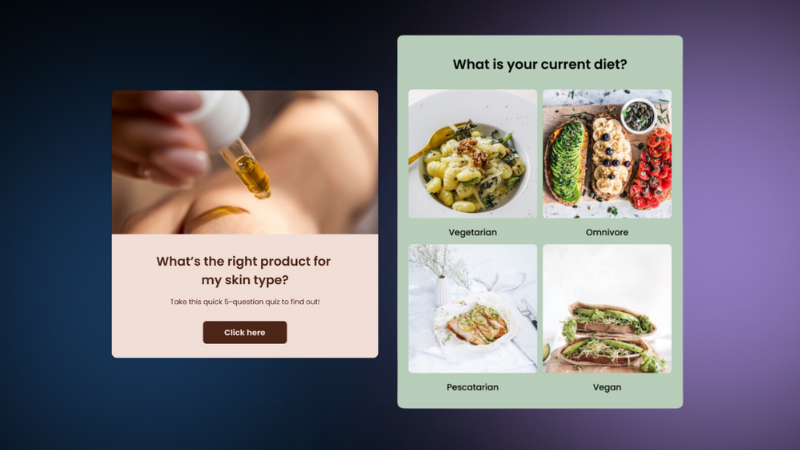Types of Market Research: 10 Strategies to Unlock Consumer Insights
There is a variety of types of market research, which can help you gather information about your customers’ needs and preferences. While this in and of itself may sound simple, it’s actually a vast topic that covers different market research methods, objectives, and areas of study. Depending on your goal, you may choose to conduct a survey, do A/B testing, gather a focus group, or research the topic online using various analytic tools. Unsurprisingly, because there are a variety of approaches you can take to understand your business’s customers, there is oftentimes confusion over their intended results.
Types of Market Research
If your goal is to have a general overview of your customers’ buying habits or to identify something more specific, such as how much they might be willing to pay for a new product or service, market research can be the key to discovering a wealth of insights on how your audience feels and thinks about your brand. In turn, this can help you make informed, low-risk decisions on things like product features, pricing, marketing, and sales.
The first step, however, is figuring out which types of market research you should use. Here are 10 types of market research methods for you to consider, each with the potential to influence your sales metrics positively.
1. Market Segmentation Research
Marketing segmentation research identifies different groups within your customer base, dividing them according to shared characteristics. These can include needs, challenges, attitudes, demographics, and other certain behaviors.
Segmentation is crucial because your customers are not a monolith. They’re individuals with specific needs and expectations, which is why it’s important to provide them with a personalized experience. At the end of the day, the more you know about each group, the easier it will be to provide customized marketing messages, create lasting relationships, and price products according to each segment’s needs.
2. Product Testing Research
Product testing involves having individuals—ideally a small focus group—use your product in a series of tests. The goal here is to determine whether your product succeeds (or fails) to meet their needs.
With a software product, for example, this type of research happens during the beta stage, or pre-release stage, of the product. Testers are instructed to use the product and monitored to see whether they come across bugs, glitches, and other issues. This allows you to make informed decisions about specific features and functions of the product before launch. This will save you both time and money in the long run.
3. Advertising Research
Also known as ad testing, advertising research measures the effectiveness of an ad based on the responses, feedback, and behavior of a consumer or group of consumers. This can be done with individual ads (e.g. A/B testing) or over the course of a certain timeframe, such as the length of an advertising campaign. Either way, the goal is to improve the effectiveness of these ads with a mass audience.
4. Brand Awareness Research
Brand awareness research allows you to understand what percentage of your target audience is aware of your brand. It delves into two types of awareness: brand recognition and brand recall.
At its very core, brand recognition research measures the ability of consumers to identify your brand from a list of brands or series products shown to them. On the other hand, brand recall research measures the ability of consumers to remember your brand without seeing it or your products.
The goal of brand awareness research is to help you improve your presence, marketing strategy, and sales promotions.
5. Pricing Research
Pricing studies determine what customers give up by paying a specific price for your product, comparing that with the benefits your customers gain by purchasing it. In other words, pricing studies help you identify what customers see as a fair trade-off for the value of your product.
Popular market research methods for studies involving pricing include surveys and focus groups geared towards conjoint analysis. This involves asking participants a series of hypothetical questions to determine which combination of product features they view as most desirable.
6. Competitor Analysis
Competitor analysis looks at how your target audience views your competitors. This includes identifying their position in the marketplace, as well as their strengths and weaknesses, and potential areas you can leverage to gain a competitive advantage.
One of the most popular market research methods used in a competitor analysis is the SWOT (Strengths, Weaknesses, Opportunities, and Threats) framework. SWOT gives you a comprehensive overview of your business’s internal strengths and weaknesses, as well as external opportunities and threats.
7. Customer Satisfaction Research
The goal of customer satisfaction studies is to increase customer retention by identifying your customers’ primary drivers of satisfaction. You can then study how these drivers can be used to get customers to continue using your products.
For example, you may find that your customers are price-conscious, so you could consider starting a loyalty program, which would give them exclusive deals and discounts.
Devising a customer satisfaction survey is an effective way to learn more about your customers and their satisfaction with your product/service. It also gives you an opportunity to strengthen your relationship with your customers and learn more about them. Using a survey maker that allows you to build attractive and easy-to-use surveys will increase engagement and make it easier for customers to cooperate with you.
8. Customer Motivation Research
Focused research on customer motivations can unlock insights regarding the purchase motivations of your target audience. For example, using Maslow’s Hierarchy of Needs, you can determine whether your customers are motivated by physiological needs, safety needs, social needs, esteem needs, or self-actualization needs.
Whatever the case, your findings can help you fine-tune your product’s value proposition and positioning. When applied properly, this will result in better marketing campaigns that both attract and retain your audience.
9. Media Research
Media research looks into your audience’s media consumption habits. These studies include:
- Where your customers get their source of news and entertainment
- Which influencers and industry leaders they listen to
- Which platforms they’re most likely to use for product research and brand discovery.
For example, your research may reveal that your brand has a predominantly young audience that gets its product recommendations from influencers on Instagram. This is a finding you can then leverage in your online marketing efforts.
10. Demand Analysis
Research on consumer demand reveals whether there’s even a need for your product or business. This may seem like a fundamental question, but many business owners are so dead set in their ideas that they ignore this step. Demand analysis helps you assess whether demand for your product is waning. And if it is, it gives you an opportunity to pivot into a new market, if necessary, before it’s too late.
One way to get a view of consumer demand is to use a tool like Google Trends to monitor search activity around keywords and topics. If a certain product or industry is trending, you can expect a hot market.
The Best Types of Market Research Depend on Your Needs
Ultimately, the question of which type of market research your business should use depends entirely on your circumstances. If you aren’t sure where to start, ask yourself what your most pressing business challenges are. Are you launching a new product soon? Product testing should be on your list of priorities. Do you want to increase the number of your repeat customers?
The bottom line? Let your immediate needs guide your research objectives.




